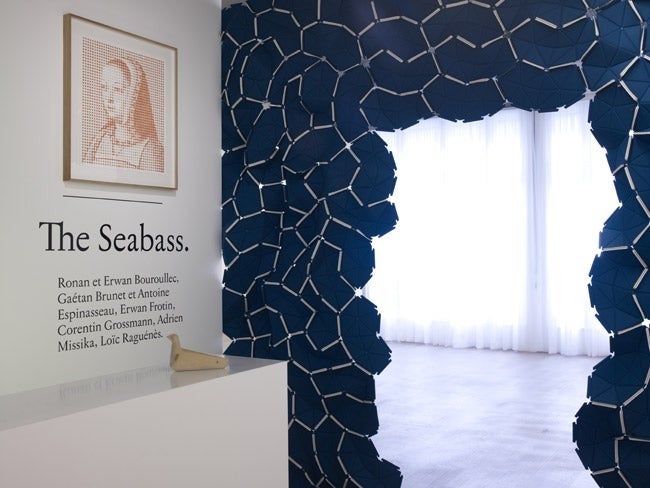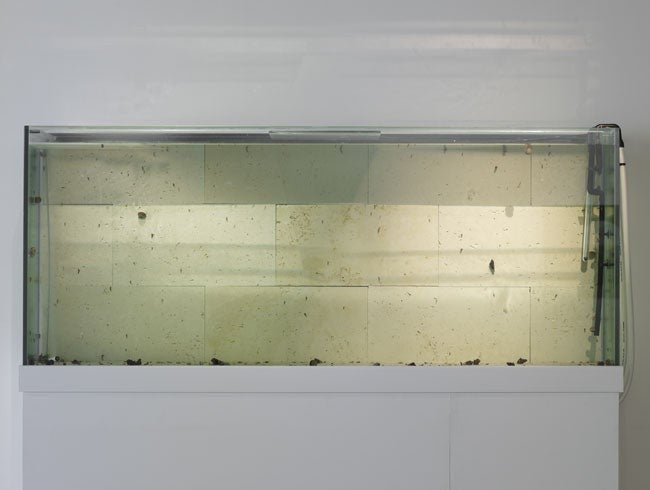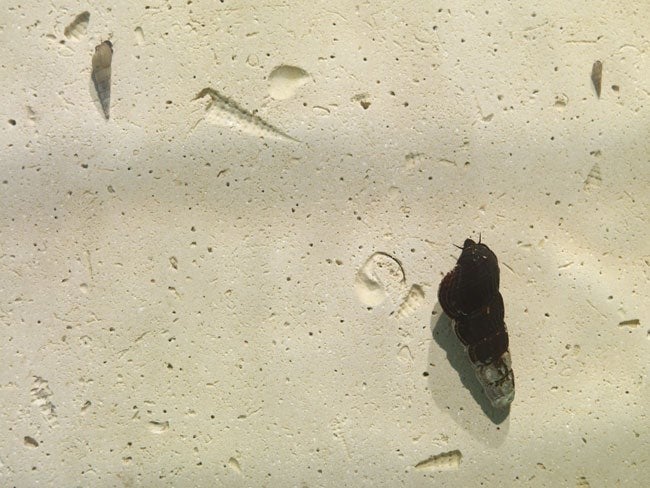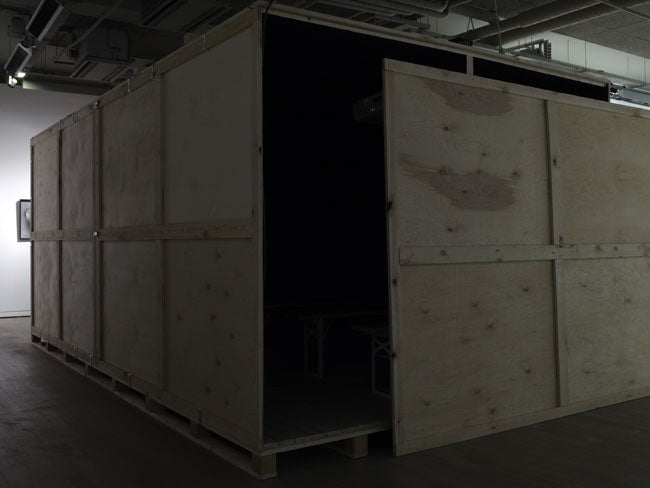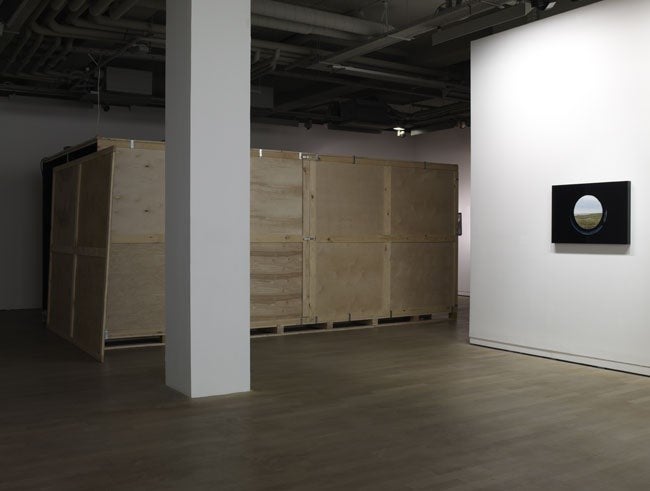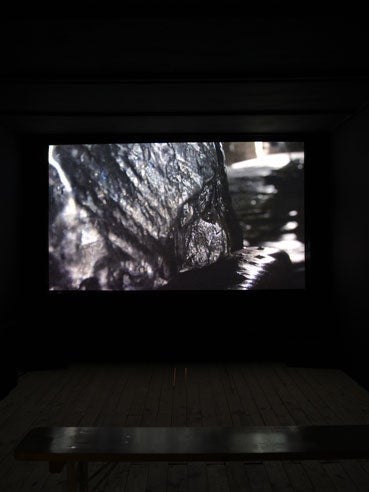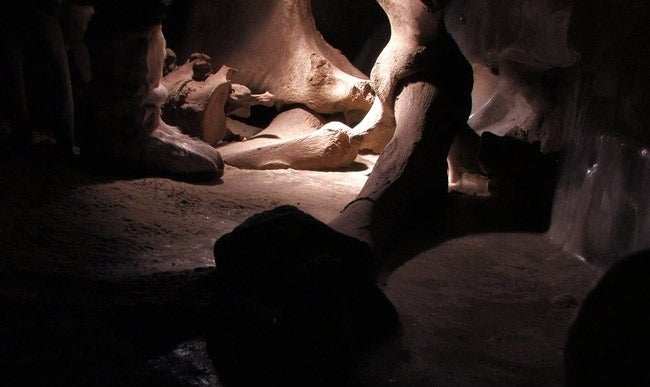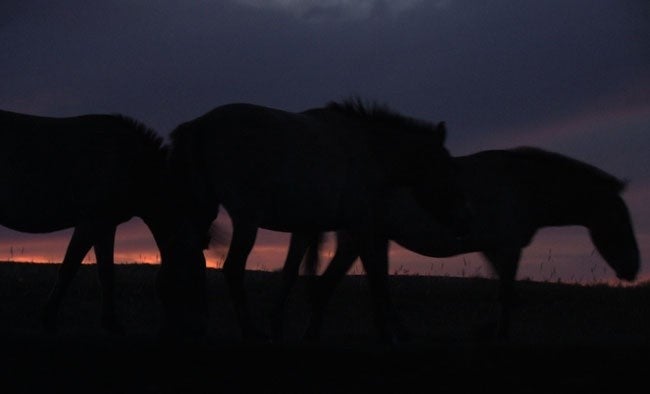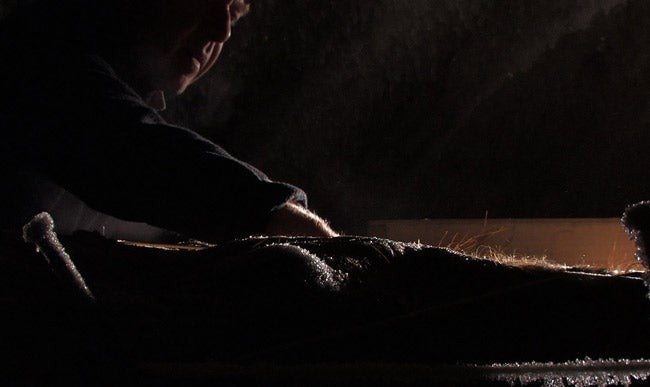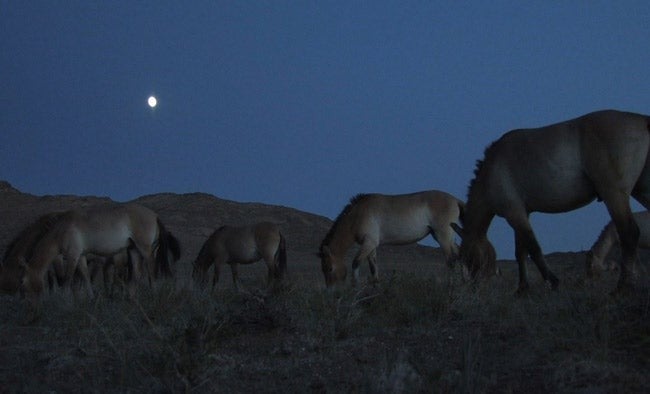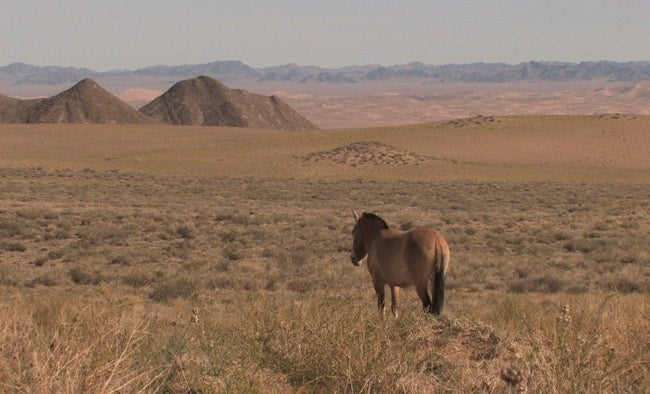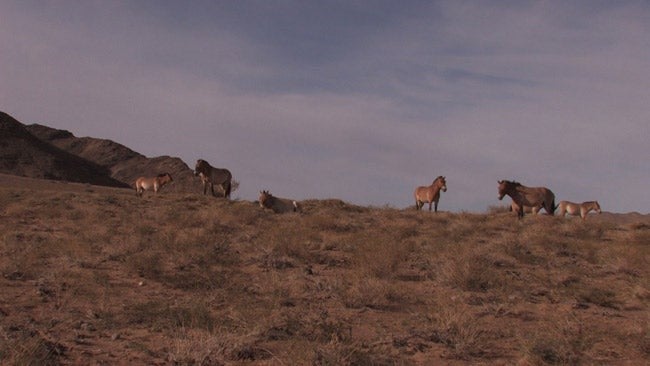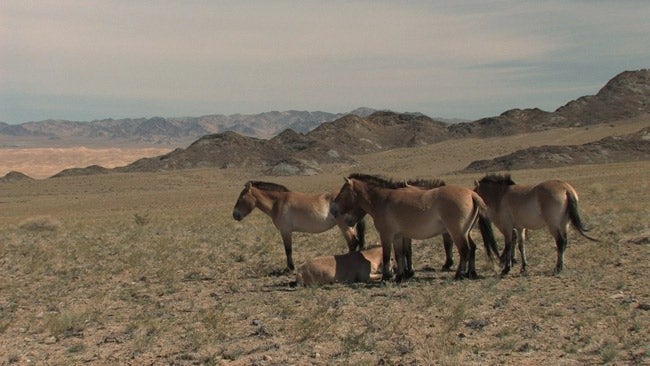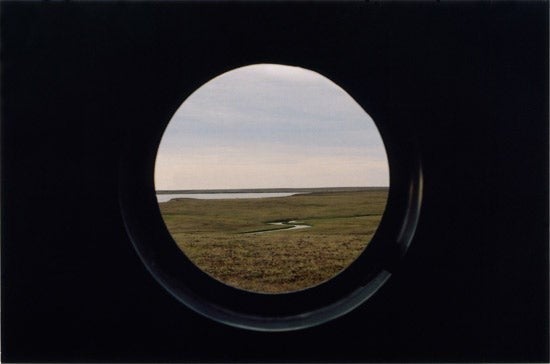Ariane Michel « PALEORAMA »

Built on reminiscences of prehistory with tools usually associated with spectacle, « Paléorama » is a paleontological exhibition of sorts structured around video installations.
Photographs and props play with the presence of cinema in space, following a path between scientific observation and staging, reality and decorum.
New works will be presented on the occasion of the exhibition, including two video installations, « La Cave » (2009) and « La Ligne du Dessus » [« The Upper Line »] (2010), both of which feature prehistoric protagonists.
Turning one’s gaze, par Jean-Marc Chapoulie
Ariane Michel is an artist who films animals,scientists, but also stones and ice crystals, so that little by little our attention to the world may gain in reality. She shoots (cinematographically) as a plant turns its leaves towards the light. She exposes and orients herself so our look may turn as well. The title of the exhibition, « Paléorama, » opens onto a reasoned manual for her art, the art of turning around.
As a prefix, « paleo » obviously takes the cinematographic exercise into the realm of science. However,paleontology is invoked here to help bring into existence the science of moving images. To study or to film the animal world involves putting two beasts face to face – which generally results in only one (human) point of view on the animal world. For a few years, Ariane Michel’s films have attempted to turn around this axis of vision, to turn the look back on ourselves as one would observe the cock of a shotgun through the barrel. »Rama, » the suffix of the title, holds the promise of the cinematographic illusion (diorama, panorama) – in itself, a liberating perspective. Individual spectators are not seated in their chairs. They are physically immersed in the position of the scientist or of the director. They observe the animal, focus on the limbs, compare the skeletal structure, explain things. They are at once distant spectators and active interpreters of the work presented.As to the films (and the photographs), the axis of observation is polysemic, as you have probably understood by now. Who looks at whom?
The direction of your look should not be taken lightly. Avoid staring at your neighbor. The beast is in front of you.In « La Ligne du dessus » (24 mns, 2010, Production Espace Croisé, Roubaix), it is Przewalski’s horse: in a Mongolian plain, the artist on the look-out observes the animal from afar. Nobody has ever been able to show this wild horse. Still, its features, the wide neck and the strong head are familiar to us. They were painted on the walls of a cave in the periphery of Montignac. Wasn’t Lascaux discovered by a dog, in fact?
In « La Cave » (13mns, 2009), it is a mammoth getting cold in a scientific cave in Siberia: the attention is turned towards the scientist, the paleontologist: his look, his gestures, his strange science. The mammoth is thawed with a hairdryer by this specialist of Cro-Magnon. Ariane Michel’s (cinematographic) art consists in putting the animal at the center of these face-offs
to take us to the very heart of existence. Indeed, even as the animal lives in plain daylight, from our standpoint it emerges out of the shadows. Worse: it is the shadows in us.
Ariane Michel was born in 1973 in Paris, where she still lives today. A graduate of the Ecole Nationale Supérieure des Arts Décoratifs (Paris), she recently presented her project The Screening as part of an « Art Statement » at Art Basel 38. Her work circulates in the fields of art and cinema, from the Atelier du Jeu de Paume (Paris) to the FID Marseille, from the MoMA (New York) to the Locarno film festival. Her feature film Les Hommes (Man on Land, 95mns) was released in French theaters in 2008 after winning the Grand Prix of the French Competition at the 2006 FID Marseille.
